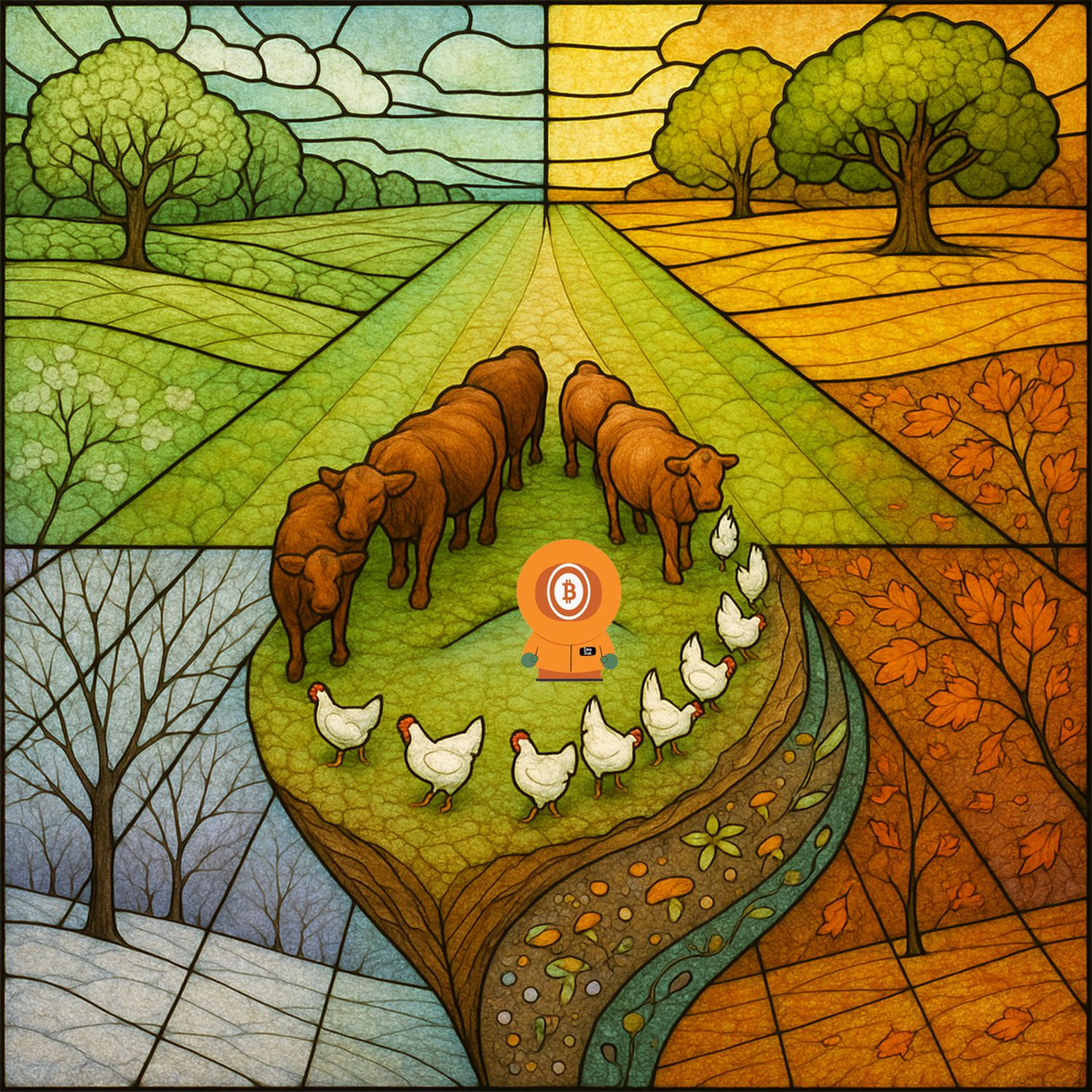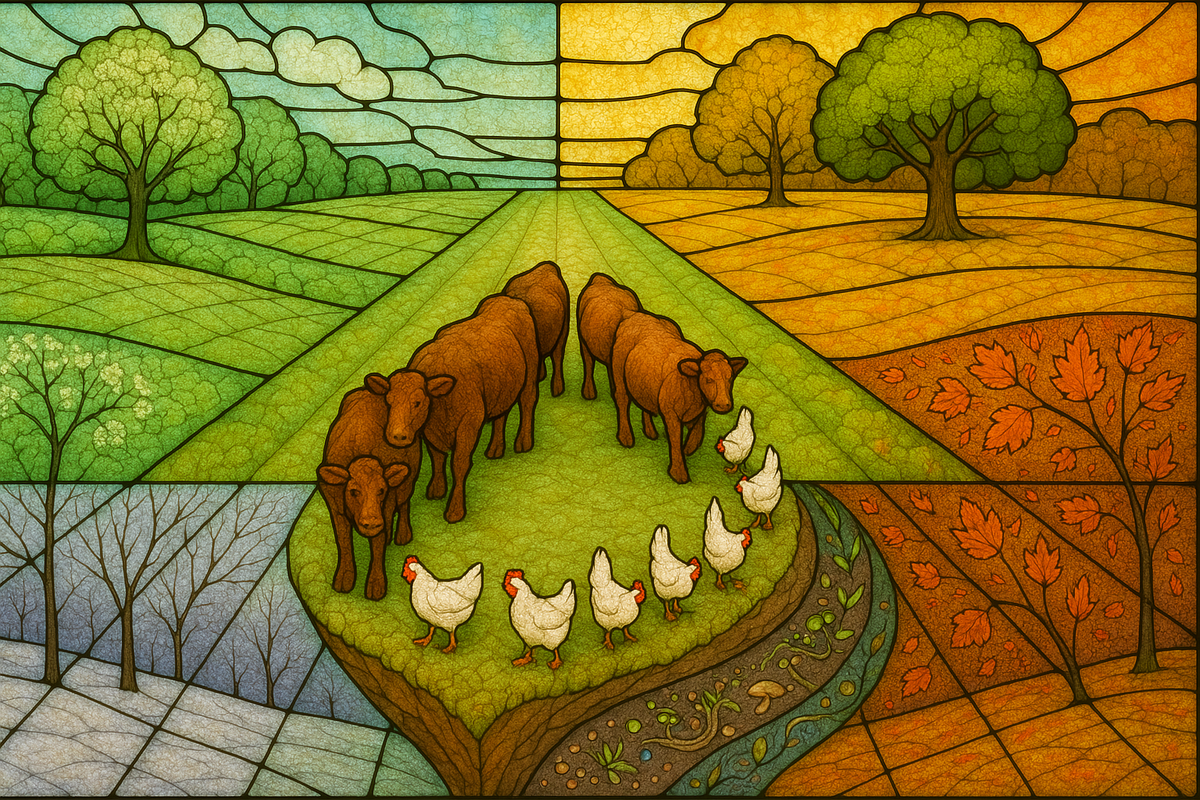8-27-2025
Life Raft turns cattle and chickens into a moving soil engine. With biochar, seeds, and compost teas, it builds carbon, restores fertility, breaks pest cycles, and outpaces old grazing methods.

Cathedral Part IV is where the Life Raft takes shape. Picture a slow-moving boat floating down a 150-foot-wide canal of grasses, forbs, and legumes. At the bow are cattle, chewing forage and stamping seeds and biochar into the soil. Three days behind at the stern are chickens, tearing apart cow pats, eating fly larvae, and dropping nitrogen-rich manure of their own. In the wake, the land they’ve crossed is more fertile than it was before. That’s the philosophy anyway. Animals aren’t the cargo on the raft. They ARE the raft, leaving behind life as they move.
The foundation of all this is soil health. Forget the lifestyle imagery of red barns and rolling pastures. The truth is simpler: no soil, no system. Ruminants co-evolved with grasses over millions of years. Grasses need to be grazed to thrive. Ruminants need grass to survive. When they eat, they also amplify soil microbe populations to a great degree. A raindrop splashes soil bacteria onto a blade of grass. The cow eats the grass, and those microbes go into a warm, moist rumen where they multiply by the billions. Mere hours later, they leave in a cow pat, ready to drop back into the soil. What began as a few tens of thousands now number in the billions: The Creator's biotechnology at work.
The Life Raft builds on this cycle with intention. Before cattle enter a new paddock, biochar and seed mixes are spread. Sometimes compost tea gets sprayed too, coating leaves with fungal and bacterial life. The cattle eat that grass, amplifying the biology in their gut, while their hooves press biochar and seed into the ground. Chickens follow up, scratching the cattle manure into the soil, adding their own hot nitrogen, and finishing the job. In one pass, the land gets reseeded, carbon-charged, and biologically inoculated. The raft moves forward, fertility in it's wake.

It’s basically "carbon engineering". Biochar holds water chemically, not physically, making it drought-proof storage. Seeds sprout into forbs, legumes, grasses, and cover crops, driving roots that pump even more carbon underground. Soil microbes find homes in biochar like fish in a coral reef, multiplying every season the raft passes. Over time, fertility compounds, and the soil begins to heal itself. Dead cotton fields or hay-worn pastures become living ground again, not because of synthetic chemistry, but in spite of it. Biology was restored.
John Kempf’s recent work exposes why the old grazing mantra of “take half, leave half” fails to build real soil carbon. Grasses store energy in roots, but forbs and legumes exude sugars that last decades in the soil. Occasional hard grazing, root dieback, and microbial exudates do matter. The Life Raft goes further by layering recalcitrant carbon from biochar with amplified biology from ruminants and chickens. Together, it captures every form of carbon: short-lived, medium-lived, and ten-thousand-year carbon.
Life Raft is more than a metaphor. It’s a plan for moving animals, microbes, seeds, and carbon in one integrated system. Every acre it crosses becomes more alive. Every year the raft completes its journey, the soil is richer, the animals healthier, and the land increasing abundance.



Member discussion: